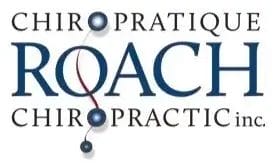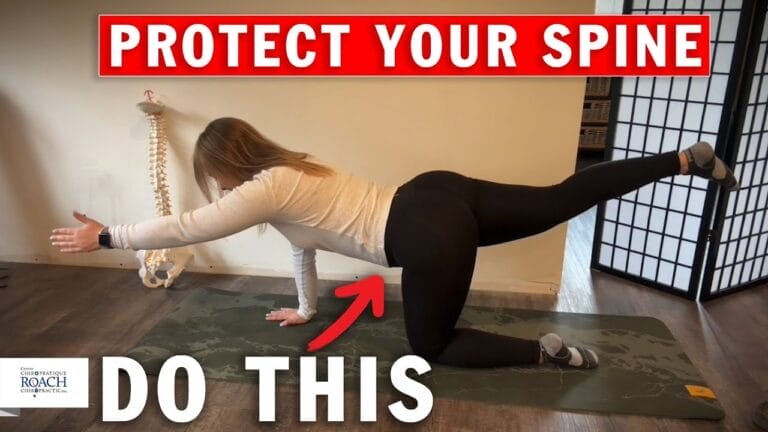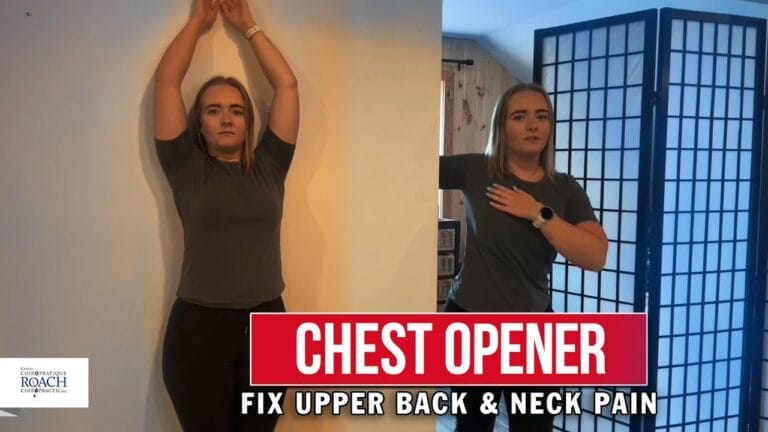Knee Pain Explained + 3 Easy Fixes You Can Do Right Now
Do you struggle with knee pain, stiffness, or discomfort when walking, climbing stairs, or working out? In this video, we’ll break down everything you need to know about what causes knee pain, the common risks, and most importantly — how to eliminate knee pain naturally through simple chiropractic and mobility-based exercises. Whether your pain comes from tight muscles, weak quads, poor joint alignment, or overuse, this guide will help you understand your body and restore healthy movement.
After learning the causes, we’ll move into three powerful knee pain relief exercises you can do at home with no special equipment:
1️⃣ Knee Extension Exercise – Strengthen your quads, stabilize the joint, and reduce strain.
2️⃣ Knee Flexion Exercise – Improve mobility, increase range of motion, and ease stiffness.
3️⃣ Yoga Band Knee Rotation Exercise – Activate supporting muscles, enhance flexibility, and promote long-term joint health.
00:00 – Reasons for knee pain
02:39 – Knee Extension Exercise
04:48 – Knee Flexion
06:40 – Yoga Band Knee Rotation Exercise
09:17 – Knee pain Review
These exercises are chiropractic-approved and perfect for beginners, athletes, or anyone dealing with knee pain, arthritis, or post-injury recovery. Try them daily for better results — they’re simple, effective, and can be done anywhere! Stay consistent and listen to your body. Relief takes time, but proper movement makes all the difference. Follow along to feel looser, stand taller, and improve your upper-body performance! 💪
VIDEO TRANSCRIPT:
Hey, everyone, I’m Doctor Clayton Roach from Roach Chiropractic Centre. And today I want to help you with something that is so very common that we almost see it every day in this clinic, and that’s knee pain. So many of you are probably suffering from pain in the knee, which again limits your ability to do the things that you love walking, bending, clothing yourself, getting in and out of a tub, driving. And there’s many different forms of knee pain and many different causes, some of them being arthritis of the knee joint, we have some meniscal injuries. Sometimes it can happen. That little fat pad that’s between the femur and the tibia is called a meniscus. And you can have some tearing in there that allows the meniscus to move around and make you feel uncomfortable. We can have ligamentous injuries. So there’s many different reasons why we have knee pain, including inflammation that develops underneath the knee cap. So what do you do about this? Well, there’s obviously a lot of things you can do, from very natural things, to some things that are a little bit more invasive, like cortisone shots and surgeries. Now, sometimes surgery is needed, right? There’s a place and time for everything. If you have a meniscal tear that’s bothering you, that’s creating locking in the knee that puts you in danger when you go up and down stairs that might be a point where you consider having surgery when there’s enough degeneration and you know a knee replacement is needed, then that might be the case for that patient.
So we want to consider all avenues from the more basic natural approach to surgical approaches. So in this video I want to show you three wicked home exercises that you can do to help with common reasons why people have knee pain. So if you have knee pain, these exercises are not going to hurt you. And they may give you the relief that you’ve been looking for for a long time. I give these exercises to my patients all the time. They can be quickly adopted in your routine. They don’t take long, so it’s not like you’re going to the gym for an hour and a half trying to rehab a joint, in this case, the knee. So stay tuned. We’re going to show you exercise number one. Move on to exercise number two. And on your way to exercise number three, you will be well equipped to tackling knee pain and all the things that you’ve avoided to do in your life because of that knee pain. Let’s get back to moving and let’s get back to enjoying your life, regardless of your age and condition.
All right, so the first exercise you’re going to want to do is with these yoga bands. So yoga bands can be bought anywhere online. And they come in different colors meaning different resistance. So some of them are very easy to move. Some of them are going to be a little harder. More importantly, they usually come in a pack, so you’ll be able to kind of try those out once they arrive. So this is a knee extension exercise. So what you’re going to want to do, you’re going to want to step into this yoga band. And you’re going to put one leg in front of the other. So we’re going to do this on both sides. So it doesn’t matter which one you pick at first. So one leg goes in front, one leg goes back. So what you want to do next is you’re going to bend this knee and you’re going to bring it back into extension. So what that means is you’re going to get the leg to be straight. Now obviously with this yellow band what this does is it creates resistance on your way back. So what you want to do is you want to bend the ankle and bring it back like this. You are going to repeat this 15 times. Now this movement is not quick. It is controlled. And what that will allow you to do is bring your knee back as far as you can.
Many of you probably know when you have knee pain, to be able to make the leg go straight is tough. So what we want to do, because you may be not able to go back perfectly straight, we want to add resistance to build that stability and elongate those muscles as much as they can. And we’re going to do it with resistance. So 15 repetitions of this. Nice and controlled and you’re going to go 2 to 3 times. So in other words you’re going to do 15. You’re going to take a pause. You can kind of reset, step back into it, do another 15. And if you can do it three times, so three sets of 15 repetitions. And then all you got to do is just rotate and do it the other way. So these are knee extensions with resistance bands called yoga bands.
Alright. So the second exercise we’re going to do is going to work more the front of the leg. We showed you extensions. We’re going to show you flexion of the knee. This is going to be accomplished with a simple yoga block. It doesn’t have to be a yoga block. It could be a little step stool. Just be creative. So what you’re going to do is you’re going to set the yoga block on the ground, and you’re going to step up on that yoga block.
Once you step up on that yoga block. The goal is to then take this leg and make it tap. So we’re going to call these tap downs. All right. So this is going to work. The knee that is on the yoga block. This is where you’re going to feel it. You’re going to come up if you need to hold on to something please do. You’re going to come up and you’re going to tap down. So what you notice is when I’m tapping down this knee is going into flexion. We’re bending the knee. Give or take about 15 to 20 degrees. So we’re bending down and we’re tapping down. Now on this one we’re not going to do 15 but we’re going to try to do about ten. And we’re going to do ten repetitions 2 to 3 times. And then we’re going to flip it over and we’re going to do the same thing. We’re going to step on the yoga block and we’re going to step down, tapping the left heel while the right knee is bending right. So I know most of you might, might have knee pain just on one side for demonstration purposes. I’m showing it on both sides so you can choose which side you want to do the exercise on based on where the knee pain is.
So again ten repetitions. And we’re going to do 2 to 3 sets just like so tap downs to improve knee function inflection. All right. So here’s the third exercise to help you with this limiting knee pain. Again we’re back to the very useful yoga band. Again these can be bought in different resistance different colors. They usually come in a package. So what you’re going to do with this one is we want to focus on some people have knee pain because they have fluid underneath the knee. So that fluid is inflammation. And what happens is this patella the kneecap is supposed to glide in a groove. Well, the problem with that is that we have a quadricep muscle here that has three strands of muscles, one on the outside middle. And the medial aspect, so center, lateral and medial most of the times, especially in athletes, but in the regular general population as well. This muscle on the outside is much stronger than the muscle on the inside. So what happens when the patella, the kneecap, goes to track? It doesn’t track in a perfect line. It gets pulled to the side because this muscle is stronger. So what’s the solution for this is to train the muscle on the inside. Because what happens when the patella is tracking to the side. It’s rubbing underneath, eroding the cartilage underneath the kneecap, creating fluid and inflammation, making it almost impossible to bend the knee.
So here’s how you do it. You are going to step into this bend, and you’re going to put the yoga band in between your big toe and second toe. What you’re then going to do is you’re going to rotate the knee outwards and you’re going to kick out. So what we’re doing is we’re focusing on this medial side, this middle muscle, to make it stronger. Some of you might be going to the gym, and you’re doing this exercise where you’re pushing this machine like this, or you might be doing it on one leg. The problem is if you keep your foot straight, you’re exercising both muscles lateral and medial, outside and middle in the same way. So if one is stronger, it is always going to be stronger. So what you want to do is you want to turn the foot outwards. And this will isolate this muscle. Again we don’t need a whole lot of resistance because when you isolate like this it’s tough. So you’re going to do 15 repetitions like this. And we’re going to try to do three sets. So 15 times three sides. And if you want because you probably have an issue on both sides you can do it on both sides. And there you have it a knee exercise protocol with just a yoga block and a yoga band.
Right. We just got to be creative. So I understand that there’s different causes of knee pain and different tissues that can be affected. This is a very generalized exercise protocol for the knee. So if there’s a meniscal tear, if there’s arthritis, you will still be safe to do these exercises. And if they help, great. If not, you may want to get more medical advice on the condition that you have the knee. But regardless, the key to getting back to doing what you’re doing is to take action. So simply try this routine. It is not a long routine, so it’s not going to take over your day. If you can carve out ten minutes of your day, go through this protocol and I can pretty much guarantee you you’re going to see some results. And evidently enough, if you have results in knee and there’s less inflammation, you’re going to have less pain and you’re going to be able to enjoy more things that you want to enjoy without having to worry. How are you going to feel later on during the day or the next day? So I hope you’ve enjoyed this video. Get going! Take action. Because with anything. Education without action is a waste of time. So I’ll see you in the next video and make sure to comment below.
SHARE THIS






